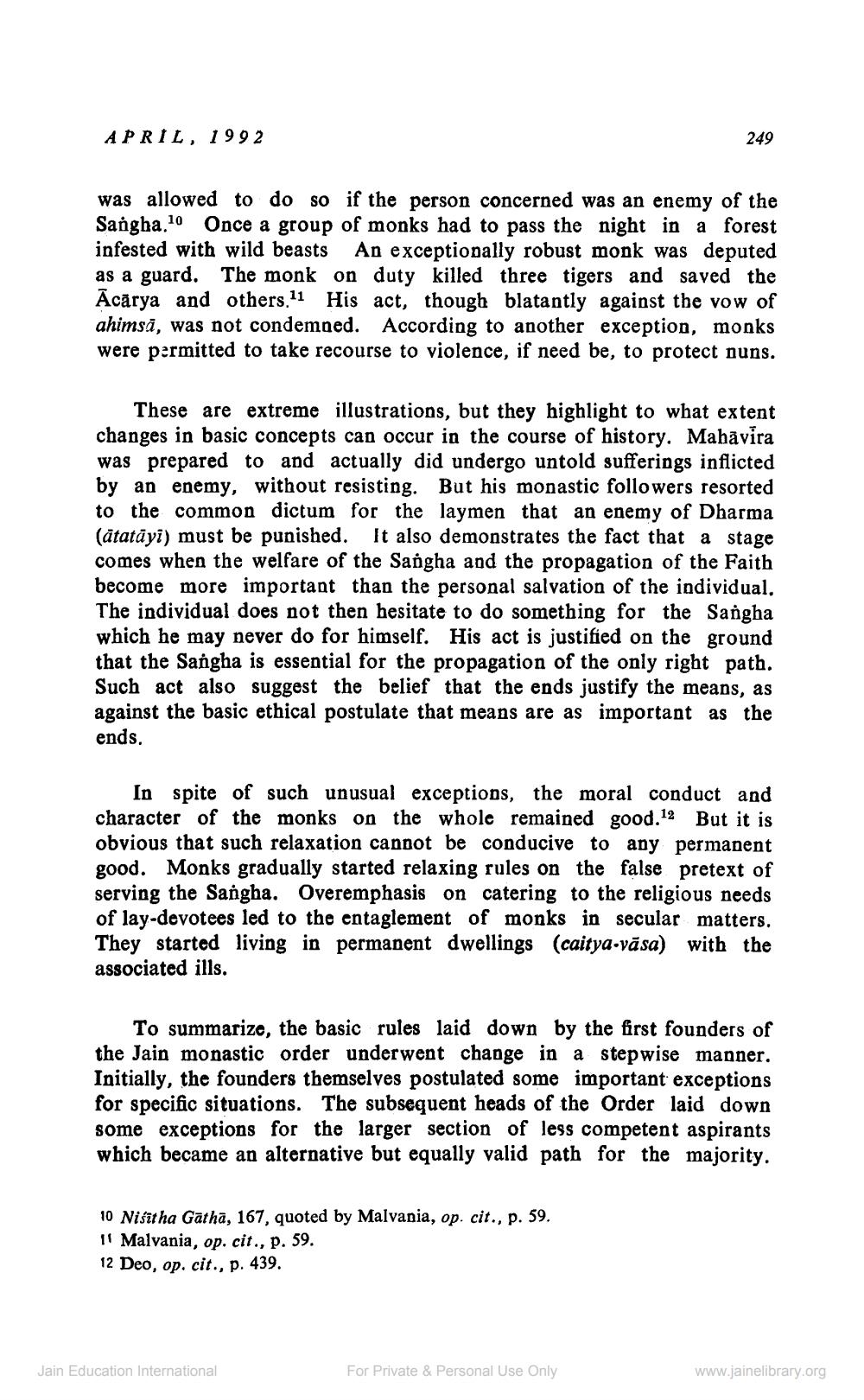________________
APRIL, 1992
was allowed to do so if the person concerned was an enemy of the Sangha.10 Once a group of monks had to pass the night in a forest infested with wild beasts An exceptionally robust monk was deputed as a guard. The monk on duty killed three tigers and saved the Acarya and others.11 His act, though blatantly against the vow of ahimsă, was not condemned. According to another exception, monks were permitted to take recourse to violence, if need be, to protect nuns.
These are extreme illustrations, but they highlight to what extent changes in basic concepts can occur in the course of history. Mahavira was prepared to and actually did undergo untold sufferings inflicted by an enemy, without resisting. But his monastic followers resorted to the common dictum for the laymen that an enemy of Dharma (ātatāyi) must be punished. It also demonstrates the fact that a stage comes when the welfare of the Sangha and the propagation of the Faith become more important than the personal salvation of the individual. The individual does not then hesitate to do something for the Sangha which he may never do for himself. His act is justified on the ground that the Sangha is essential for the propagation of the only right path. Such act also suggest the belief that the ends justify the means, as against the basic ethical postulate that means are as important as the ends.
249
In spite of such unusual exceptions, the moral conduct and character of the monks on the whole remained good.12 But it is obvious that such relaxation cannot be conducive to any permanent good. Monks gradually started relaxing rules on the false pretext of serving the Sangha. Overemphasis on catering to the religious needs of lay-devotees led to the entaglement of monks in secular matters. They started living in permanent dwellings (caitya-vāsa) with the associated ills.
To summarize, the basic rules laid down by the first founders of the Jain monastic order underwent change in a stepwise manner. Initially, the founders themselves postulated some important exceptions for specific situations. The subsequent heads of the Order laid down some exceptions for the larger section of less competent aspirants which became an alternative but equally valid path for the majority.
10 Nisitha Gatha, 167, quoted by Malvania, op. cit., p. 59.
11 Malvania, op. cit., p. 59.
12 Deo, op. cit., p. 439.
Jain Education International
For Private & Personal Use Only
www.jainelibrary.org




